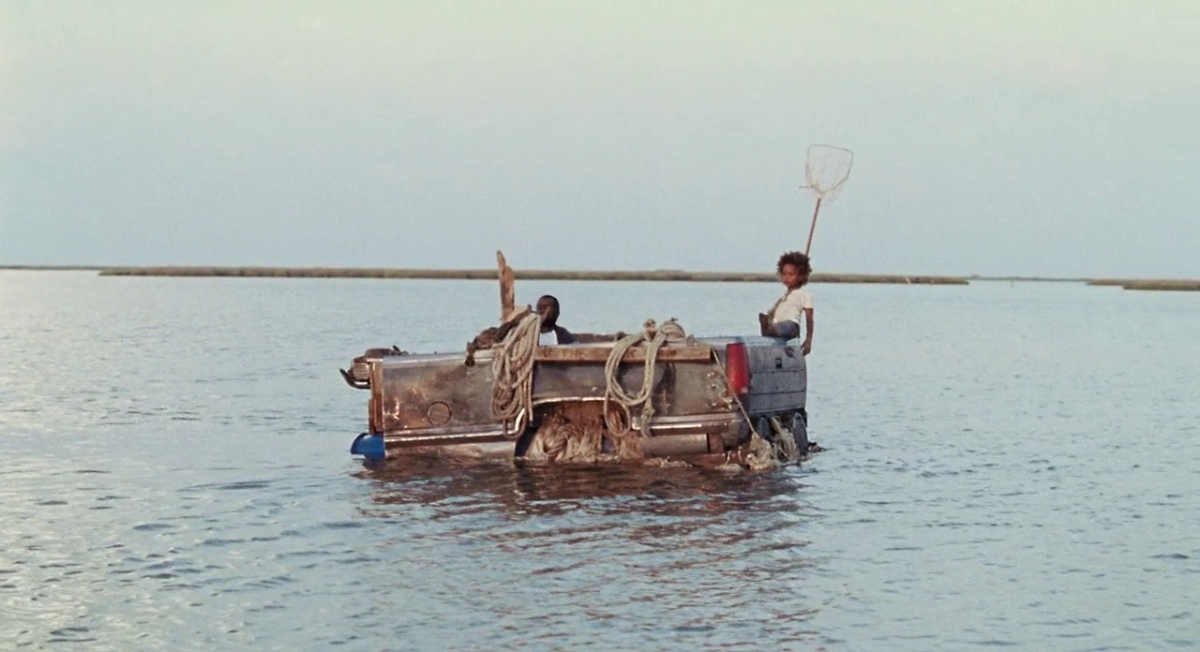Context
Beasts of the Southern Wild is an independent, or ‘indie’, film; meaning that it prioritises art over money and is not backed by a Hollywood studio. The film is set in a place known as the ‘Bathtub’, an island in Louisiana that is sinking due to the ice caps melting. While there are fantasy elements to the story, it is quite heavily based in reality. The sinking state has displaced many people from their homes along the coast, which is shown in the film. The film was inspired by the Hurricane Katrina aftermath in 2005; the director said “I live in New Orleans and was interested in telling a story about people who are staying in South Louisiana and why they’re holding on. I wanted to celebrate that impulse to stand by this place, in spite of its dangers or flaws.”
Aesthetics
This film was shot on 16mm filmstock to visually evoke the gritty aesthetic of the Bathtub. Nature documentaries also inspired Zeitlin, as he said that he is “really obsessed with nature documentaries.” and that he “wanted to explore that child-like fascination with nature by showing it up close and in detail.” The visual style of the film was also influenced by the documentary Dry Wood (Blank, 1973), which shows a group of people preparing food together, which is quite similar to a scene in the film. The short film Jerrycan (Julius Avery, 2008) also influenced the film, because of its use of handheld, improvisational feeling camera work, focusing on just presenting the images rather than glorifying and beautifying them.
Representation
In the film, there is a dam of sorts called the Levee dividing the two areas. This dam acts as a physical barrier between different social groups.
Often Wink tries to encourage Hushpuppy to be strong by calling her a man, Wink says “you gonna be the last man in the bathtub”. He would also get angry at her for crying and also said that weakness and emotions are “just a side effect of being a stupid little girl.”
Ideology
Producer Michael Gottwald says, “We’re dedicated to making films as a community about communities on the edge of the world. Limitations are motivating forces for us. We love to bust through challenges.”
The film also idealises and romanticises the lives of those living in poverty, along with its quite forgiving portrayal of child abuse; which is mildly problematic.
Spectatorship
The audience is encouraged to align themselves with the character Hushpuppy, as the camera is often positioned from her perspective. Mostly having the height of the camera at her eye level rather than the adult’s in the scenes.
The handheld camera adds a layer of realism to it, make it seem more real to the viewer; as if there were no time to stabilise the camera, they just had to quickly capture the events as they were happening.
This handheld look they went for also helped to ground the magical elements of the story more solidly in reality. The shots of the aurochs are handheld like the rest of the film, not locked off creating a falsity around it, it makes it feel real for the spectator. The authentic locations and non-actors also help to ground the film in reality and helps sell the realism of it all to the spectator.

